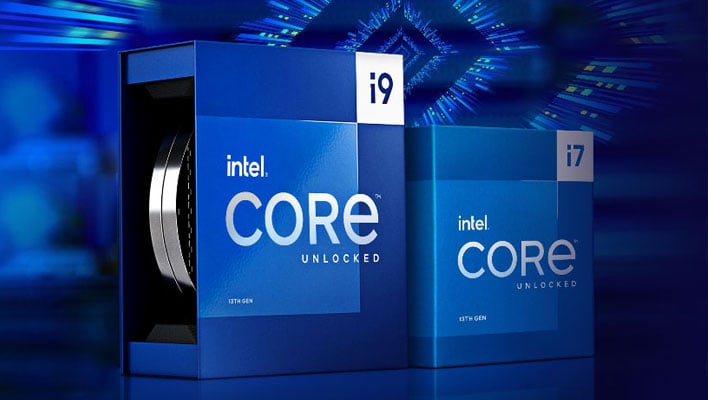CPU Shipments Finally Rebound As Intel Reclaims Market Share From AMD

It's been a bit of a rough stretch for the PC processor market, with CPU shipments falling to the lowest point in a decade during the first quarter of 2023. The thing about hitting rock bottom, though, is there's no way to go by up. Or so the saying goes—sideways is another possible direction. Looking at the latest figures supplied by Mercury Research president Dean McCarron, things didn't go sideways and instead the PC CPU market exhibited signs of a much-needed rebound.
"As a result of
this there were no new records set in the second quarter—high or low, for units, revenues, pricing, or growth rates—which ultimately is good news and reflects that the worst
part of the current inventory-induced downturn is probably
now in the past," McCarron stated in an email.
Desktop and mobile (laptop) client CPUs performed particularly well, with McCarron noting an impressive 20% uptick in shipments from the previous quarter "when the average in a normal market is for nearly flat on-quarter results."
On the flip side, overall server CPU shipments slipped in the second quarter. The silver lining for Intel and AMD, however, is that shipments of Xeon Scalable and EPYC chips meant for large data centers inched upwards. According to McCarron, this is a sign that the server CPU market has either bottomed out or is close to it (meaning, again, there's only one direction to go).

Source: Mercury Research
We're always curious to see how the market share figures shake out between Intel and AMD. In the first quarter of 2023, AMD pilfered some share from Intel to claim more than a third—34.6%—of the overall CPU market, leaving Intel with a still-dominant 65.4% share. Last quarter, however, Intel managed to flip the script and reclaimed most of its lost share—it ended the quarter with a 68.4% share, leaving 31.6% for AMD.
Those figures count IoT and SoC shipments in the tally, including the semi-custom chips that are found in game consoles like the PlayStation 5 and Xbox Series X|S. If taking those out of the equation, the split between Intel and AMD comes out to 82.6% and 17.4%. That's virtually unchanged from the first quarter, in which the spit was 82.8% and 17.2%.
McCarron cited console cycle maturity and seasonal downturns as reasons why AMD's SoC sales were not quite as strong as they were at the beginning of the year. And as for Intel, McCarron says strong Chromebook sales helped bolster its positioning.
"While lower on quarter, Intel's client share was up strongly on
year, primarily due to significant growth in entry-level mobile
CPUs (notebook Celeron processors and especially Intel's new 'Intel Processor' branded N100 CPUs which increased very
strongly on quarter) that are primarily used in Chromebooks—all signs are after a year-long lull, Chromebook demand for CPUs
--both X86 and ARM—has increased dramatically in the past two
quarters," McCarron said.
One thing to keep in mind when looking at the various figures is that they're prone to movement based on how suppliers time their inventory corrections. In other words, they don't necessarily paint a perfect picture of demand trends. The latter is something that will come into better view towards the end of the year.

